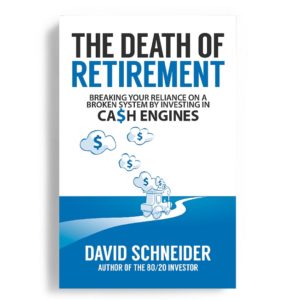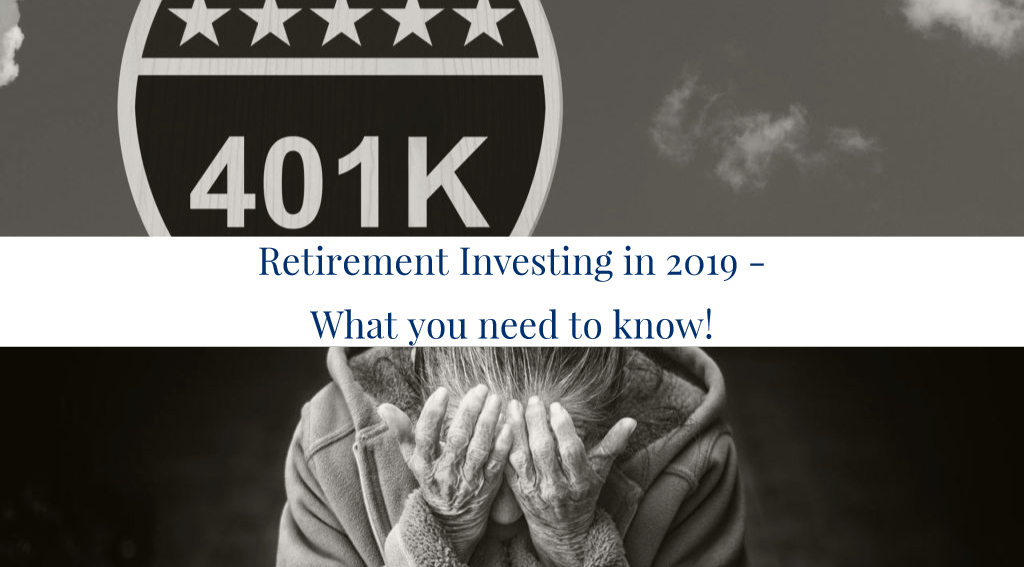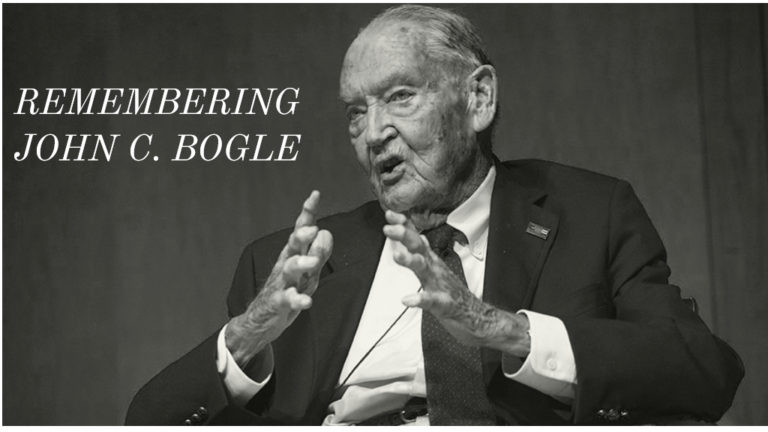Retirement Investing – What You Need to Know
What if I told you that everything you knew about investing for retirement was wrong?
What if I told you that what we call ‘investing’ these days is just millions of people over the world being lured into a game they don’t understand?
We are all conditioned to think about the world of finance, stocks markets, and mutual fund products as an easy route to riches, and even more so when it comes to saving for retirement. More often than not, we’re told that the only real way to grow your pot of cash is through investing in stock and bond funds.
Investing in financial markets for retirement has many pitfalls and risk and this post we discuss some of the major risks and how you could approach retirement through smart investing. Be warned, this is a very long article!
 The Retirement Challenge – An Introduction
The Retirement Challenge – An Introduction
If what Taylor Pearson (author of The End of Jobs) and James Altucher ( author of Choose Yourself) say is even remotely true, this has very serious consequences for all of us. All these authors and others make strong cases that the traditional route to retirement is bust, and that we are in for some fundamental changes over the next 20 to 30 years – changes that will have a devastating effect on how we all have to save and invest for our future.
As iconic thought leader Tim Ferriss summed it up in his best seller The Four Hour Work Week:
“Retirement as a goal or final redemption is flawed for at least three solid reasons:
- It is predicated on the assumption that you dislike what you are doing during the most physically capable years of your life.
- Most people will never be able to retire and maintain even a hotdogs-for-dinner standard of living.
- If the math does work, it means that you are one ambitious, hardworking machine.”[1]
Point a is debatable, but he is spot on with points b and c. According to an Ernst and Young study, 75% of Americans can expect to see their assets disappear entirely before they die.[2] The Center for Retirement Research at Boston College reports that for those workers between the ages of fifty-five and sixty-four, the median balance in household 401(k) or IRA accounts is a scant $111,000. Today, the average American retires at sixty-one and dies at seventy-nine.[3] At our current rates of interest, inflation, and life expectancy, $111,000 would provide only about $7,300 in each year of a two-decade retirement. Worse, one-fifth of the workers in this survey hold balances of less than $13,000 (before inflation). With that, you can barely afford dog food, let alone hot dogs.
Yet, instead of coming up with valid alternatives and new approaches to retirement, most mainstream advisors recommend more of the same: ‘financial product variation,’ expensive financial ‘advice,’ and elaborate ‘diversification’ models. What I find most horrifying about this is how early in their lives people are lured into these flawed systems and how completely people believe that these systems are the only way to secure their future. It’s clear that retirement investing as it is taught today is deeply flawed and needs to be reformed.
Simple Problem, Simple Answer
The experts have a simple explanation: ‘Not saving enough’ – a statement you might hear very often among personal finance gurus,[4] which is a bit like saying somebody is losing at tennis because he or she is not hitting the ball well enough. Today, most millennials are criticized for leading allegedly hedonistic and wasteful lives. In contrast, many of our parents and grandparents are depicted as leading a solid middle-income life, based on earnest work and delayed gratification so that their retirement could be spent in peace and happiness.
What is perplexing to me is that the criticism usually comes from a generation that works in upper or higher management positions for many companies whose very products and services we are being chided for over-consuming. The companies these people run – as we shall see, the very companies we’re supposed to be investing in – succeed on the back of their young consumers’ purchases. If you want more head-scratching, just read the business section on how the general economy fares.
You will read constant complaints by politician and economists about how sluggish the economy is because we are not consuming enough. The US GDP is roughly 70% personal consumption, and Japan’s GDP (the world’s third-largest economy) is made up of 60% personal consumption. If we stop buying in order to invest, our investments will shrink as the company’s sales decrease. If we do the opposite, we have no savings to grow.
How Much Do I Need to Retire? How Much is Enough?
The biggest question of all- how much is enough? The conventional advice given by such firms as Fidelity Investments states that you should “have the equivalent of your salary saved by age 30 and (…) 9 times your final salary in savings if you wanted to retire by age 65.”[i] If you earned $50,000 by age 29, you would have put aside $50,000 by age 30. A person age 35 earning $70,000 a year is supposed to have saved $140,000 on monthly savings of $1,000, made up of matching contributions and private savings. If your salary were to be $120,000 gross by age 60, you would need have at least $1.1 million put aside at the time of your retirement at age 65.
There are so many assumptions in these calculations that it’s impossible to explore them all. Ask yourself: if you are 35 and receive $70,000 gross salary, what are the odds you will actually have up to $140,000 saved?
Many retirement calculations are based on the 4% withdrawal rule made famous by a 1998 study known as the Trinity Study[1]. It suggests you can withdraw 4% of your account annually and never run out of money (assuming, of course, that your money earns more than 4% above the rate of current inflation—so, these days, roughly 7% in the US). In a popular blog post, business consultant and serial entrepreneur Tim Connelly wrote: “Under the 4% withdrawal rule you might have to save up $2 million to have a comfortable withdrawal rate [of] $50,000, not accounted for any inflation or tax scenario…totally passive index funds or bonds must save a minimum of $2,500,000.”[ii]
There’s no doubt that this is profoundly challenging. It’s obvious that you either need to jazz up the returns on your savings or, as the Economist has suggested, settle for a life of continuous work. Both options are less than enticing, even though Fidelity and Co. are more than happy to help out. Maybe there is a third way that utilizes the power of investing but doesn’t rely on the help of financial service providers. Maybe, it’s the wrong question to ask: How Much Do I Need to Retire?
Whatever the truth behind these forecasts may be, we can assume with confidence that the future will look very different from the lives our parents or grandparents led. All this means is that many of the assumptions at the core of contemporary savings advice simply do not tally with the reality most people face. The result is that in the end, most people simply cannot save enough. It’s clear, that the challenge of not saving enough will continue to haunt many of us.
The Challenges of Saving
These days, we have a wide range of retirement options. We could choose an ultra-conservative path by simply working and stashing away money. It’s transparent and easy on the mind so that anyone could do it without the help of specialists or anyone else. But there are some major challenges and downsides to this path – it’s not inflation!
People’s behavior about saving and investing can be pretty baffling. Richard Thaler and Cass Sunstein describe a puzzling case in their book Nudge: Improving Decisions About Health, Wealth, and Happiness. In the United Kingdom, some pension plans are paid entirely by the employer. To be eligible, all the employee has to do is visit HR and sign a document. That is literally all they have to do to get a pension without any contributions or pay deductions from their side.
The fact that one out of every two eligible employees failed to sign up surprised the HR departments and Thaler and his research team. According to Thaler, it is “equivalent to not bothering to cash your paycheck.” The only persuasive explanation they could come up with was “many people make poor financial decisions that cause themselves real financial harm.”[i] It’s a sad reality, but not a satisfying explanation.
Conversely, when the decision is, to a certain extent, taken out of our hands, the results can be impressive. Singapore is the perfect example. The Central Provident Fund in Singapore (CPFS), which is a compulsory employment based savings plan to fund retirement, healthcare and housing needs in Singapore, is one of the most successful savings plans in the world. Since its inauguration, the mandatory savings rate for both for both employers and employees was continuously set higher until it reached 25% in 1985 which applies to this day for employees.[1]
According to the Singapore Business Review, the bulk of household assets is in properties (49% of total), while cash and deposits made up 19% in 2013.[ii] Additionally, according to Forbes, Singapore is the world’s third richest country per capita.
Not saving enough for retirement is an old challenge. A whole industry has formed around the subject of how we are supposed to save money from our paychecks. One of the best and long-lasting advice is “pay yourself first.” But all the well-intentioned advice is useless if the individual is incapable of following through. Maybe, a large majority of us faces a very different economic reality than leading self-help gurus so naively assume.
Studying Retirement Investing
Today, we have a myriad of retirement calculators that can calculate the exact amount of money you need to save today so that you can retire with the same standard of living tomorrow. This is considered modern retirement planning. At the same time, they will spit out customized pie charts with exact instructions of how it should be implemented through mutual funds.
You just have to tweak some numbers, add some higher yielding asset here, allocate some money there, and ready is your pizza pie with 8 slices or more. All this should assure you that retirement planning is as easy as tuning your radio or calculating the position of stars and planets.
All this is to encourage you to continue contributing and to remain invested on Wall Street’s terms. In the end, you get away with a false sense of security, and a system that entirely relies on the fate of future market prices.
In this perfect world of predictable returns and constant growth, you are encouraged to ignore all boom and bust cycles and the constant skullduggery on Wall Street. You will be assured that these have no meaning in the long-term. They will be like blips on a wonderful chart that always points upwards.
The message is clear: ignore everything and look forward. Ignore the ridiculous financial excesses of the past. Shuffle the money on a monthly basis, in a multitude of financial product offerings. Don’t get involved and don’t ask questions. Ignore all the filth and rotten practices that seem to come to light with each economic bust.
You Learn Zero and It’s OK – Really?
It all comes to this: it’s OK to know nothing. If you believe the above, then I am afraid to say, you are being conned. You are being lulled into a false sense of security wherein any future financial crisis, you will neither have learned the mechanics of investing nor be prepared for the logical consequences.
Job losses are real consequences, and being forced to sell your stocks, mutual funds, and ETFs, at the worst possible moment, are some of the psychological traumas you might have to deal with in a time of sheer panic. You won’t even know whom to blame for your miserable financial situation.
Try to sue any of the mutual fund providers, and you’ll discover it’s pretty much impossible. In the end, you haven’t learned anything of value, except how to transfer money from your pockets to someone else’s. You have always been, and remain, a “know-nothing” member of the party even though you took retirement planning seriously.
Retirement Options Today
Let’s take a look at the conventional retirement options available to you today:
- Social Security,
- Corporate Pensions, and
- Private Pension Plans.
- Other Retirement Options
We’ll also take a look at what you can expect if you choose to rely on them, and what hurdles you’ll have to overcome to do so. Be warned—they are formidable.
Social Security
At the very base of retirement options always is social security a remnant of the industrialized revolution and first brought to light by Otto von Bismarck in Germany in 1889. Social security benefits vary by country. In the US, the Social Security Act was signed into law by Franklin Roosevelt in 1935 and encompasses several social welfare and social insurance programs, disability insurance, and basic pensions. You can claim Social Security at age 62 the earliest, to age 70 the latest. America’s social security system is funded primarily through payroll taxes collected by the IRS.
For comparison, the German system, which actually dates back to the 19th century, has three separate sections. The ‘State Pension Insurance’ applies to all employees and employers paying a percentage of salaries into this system. The other two sections are a ‘Voluntary Occupational Pension Insurance’ and private insurance. Funds paid in by contributors (employees and employers) are not saved (or invested), but are used to pay current pension obligations. This poses a serious problem. With one of the worst demographics among industrialized countries, there is less and less money in the pot to support a growing population. The retirement age was increased to 66 recently, and it will be increased again, by 2023, to 67. In 2012, the average pension was a scant €1263.15 ($1,600) per month.
These circumstances are repeated all over the world, including in Japan. What this means for you, provided you’ve been paying into your state pension, is that payouts might not be enough to cover the bare minimum of your future needs. But, it’s a start that many developing countries don’t provide. Keep in mind that this is just the first layer of retirement defense in US retirement planning and for countries such as Germany or Japan. There are two more layers to follow.
Employer Pension Plans
For most employees in the US and other first-world countries, there will also be access to some form of individual work-based retirement plan either through government, corporate or trade-union controlled options.
The 401(k), has become the dominant retirement savings plan sponsored by an employer in the US and has spread to other developed countries. Among retirement options, it is by far the most promoted today. A good example of such a plan can be seen with the Thrift Savings Plan (TSP), a savings plan the federal government offers to its employees in the US. As a government-sponsored thrift plan, it comes with very attractive fee structures. Members only have to pay fees as low as 2.9 basis points, or 0.029 percent of what they contribute—far less than almost every other mutual fund or ETF charges to general retail clients in America. The low fees result from economies of scale and the subsequent bargaining power afforded to the institution by more than 4.6 million participants and more than $400 billion in assets.[ii] Its funds are mainly managed by BlackRock, the largest asset manager in the world.
So, here is a small dose of straight talk from financial journalist Felix Salmon:
“The 401(k) is a way for both your government and your employer to disown you, and to leave your life savings to be raided by the financial-services industry and its plethora of hidden and invidious fees.”[iii]
Neither straight-talking, self-made millionaire Grant Cardone nor I could agree more. Cardone calls 401(k)s, and other retirement savings accounts, “traps that prevent people from ever having enough.”[iv]
Keep in mind, original pension plans and their successor, the 401k, were designed to be tax efficient savings plans for future retirement needs—a form of additional retirement insurance beyond basic social security. They do offer real benefits to many participants who would prefer a very passive approach to their financial affairs. But they are not, as many personal finance gurus suggest, a simple path to wealth.
Private Pension Plans
A private pension is another retirement option. It is a plan where individuals contribute from their earnings, which then pays a private pension after retirement, in addition to what may be received from Social Security or any corporate 401(k) plan. It’s the third defensive layer, and is an alternative for anyone who opts out of state, or corporate schemes, or wouldn’t be covered by them in the first place, such as the self-employed, or employees at small to midsize companies. In many cases, contributions to such plans are tax deductible.
One distinct characteristic of most private pension plans is that the holder themselves have to manage their withdrawal rates and account balances. That is one of the main features of any defined contribution plan. By definition, only the contributions are defined not the benefits and all the management that come with it. Investment risks and pension balance risks are not borne by the plan sponsor but by the plan holder—and this is the primary issue of retirement planning for individuals.
In the USA, a very popular vehicle for private pension plans is the Individual Retirement Account (IRA). The IRA has tax benefits, and is easily accessible. The standard IRA is held at a custodian institution, such as a bank or brokerage, that will give you options on how you could store or invest your savings contributions. For example, the custodian may allow plain certificates of deposit, individual stocks and mutual fund holdings.
More Retirement Options
Another option that falls under private pensions is various forms of life insurance products run by insurance companies. These elaborate contracts will pay out a regular pension at a specific retirement date, depending on the contract’s details and agreements. A popular form of insurance is ‘Term Life Insurance,’ which protects a family if the main breadwinner passes away. Some financial advisors recommend whole life insurance products, policies which remain in force for the insured’s entire lifetime, provided required premiums are paid, or to the maturity date.[v]
With all private pension plan solutions, including those offered by your employer, you need to keep one thing in mind: Private pension plans can sometimes fail. Since the Subprime Crisis, we should all be aware that private finance firms can go bankrupt, and so can corporate pension plans. If you’re unaware of this, read up on Enron and the thousands of employees who lost their pension plans stuffed with Enron shares. Relying only on your corporate 401(k), private IRA or insurance product is a risk and should discourage you to get complacent about your financial future.
The whole product range of private pension solutions is a vast field and provides an extensive list of retirement options – for a fee of course. It’s your responsibility to be informed about the details of each scheme, financial service, and specific retirement product in your own country. For more details, see the recommended reading list at the end of this chapter, and consult with your local consumer protection agency.
Definition of Pension Plans
Pension Plan Failure in the modern age will haunt future generations. It’s an enormous risk to rely on a broken system for retirement investing. First, we need to understand the current system and definitions related to retirement investing and existing pension plans.
Here is a basic definition of what a pension is:
“A pension is a fund into which a sum of money is added during an employee’s employment years, and from which payments are drawn to support the person’s retirement from work in the form of periodic payments.”[i]
Not too long ago, large numbers of Americans enjoyed a pension dream world. Traditional pensions guaranteed a steady stream of payments until the recipient’s death. Known as “defined benefit plans,” the payouts were set and predetermined in advance. Together with the benefits of Social Security, the average worker enjoyed a robust safety net.
This system was not that old. The Social Security Act was passed only in 1935, and as late as 1940, only 12 % of workers had pensions. By 1975, just 55.2% – that is, little more than half – of all American workers were covered by pensions. This growth was driven by unprecedented prosperity, where the US particularly saw a post-World War 2 boom.[ii]
Pension Plan Failure in the USA.
Today’s pension and social security reality looks very different, and there is no better example than the story of CalPERS, the California Public Employees’ Retirement System (CalPERS). CalPERS is the largest state pension fund in the US, and “manages pension and health benefits for more than 1.6 million California public employees, retirees, and their families.”[iii]According to Fortune Magazine, “the fund has 68 cents in assets for every dollar in liabilities, assuming that it continues to earn returns of 7.5% per year, though it has failed to do that for two years in a row.” Those words were published in June 2016 – and 2017 doesn’t look any better.
Fortune traces the problem back to “a combination of an aging population, tight state budgets, and an unwillingness on the part of politicians to force public sector unions or taxpayers to contribute more to these pension funds.[iv] In fact, most pension plans in the US and around the world are technically and practically broke. Municipal bankruptcies are increasing in the US as their pension obligations balloon. Many traditional industries such as steel and airlines have already rid themselves of pension obligations by declaring Chapter 11 bankruptcy.[v] Traditional pensions are underfunded by trillions of dollars.4 As mutual fund expert William Birdthistle put it, “The golden age of the pension…is effectively over.”[vi]
The situation for Social Security doesn’t look better. The average monthly benefit for retirees from Social Security in the US is now $1,335, or just over $16,000 per year.3 Imagine trying to survive on just over $1000 a month at the age of 70, with healthcare bills, food, rent, and other necessities. Not a pretty picture, is it?
Pension Plan Failure in Japan
Accelerating Pension Plan Failure. One way of getting around this shortfall is for big pension-providing institutions to invest in volatile assets. This is what the Government Pension Investment Fund (GPIF) of Japan (the biggest pension fund in the world, with $1.1 trillion in assets under management) did.
For most of its life, the GPIF was famous for having an ultra-conservative investment policy, keeping almost 60% of its assets in risk-free domestic fixed income securities, and 11% in high-grade international bonds – with slim investments to domestic and international stocks. That changed in October 2014.
The GPIF (and, in fact, many other pension funds around the world) concluded that there was only one way to compensate for the complete collapse of interest income in today’s new low-interest regime: investing more in stocks and other risky assets managed by third parties. The GPIF increased allocation to domestic and international stocks to 50% of their portfolios. People argued that their whole reason for existence is “to provide retirement income security for the remaining life of the plan member;”[vii] – if they didn’t do something to ensure that, weren’t they being negligent in their duties?
Outsourcing Management Duties
Because their own investment management team was not equipped to handle such a large allocation of stocks, the GPIF had to hire over thirty advisory firms. The list of who the GPIF turned to reads like the who’s who of money management– firms such as Fidelity, Morgan Stanley, and Goldman Sachs.
For them, it was a fee bonanza, and it was one that didn’t end there. The bandwagon effect, where people primarily do something just because others are doing it regardless of their own beliefs, is a very strong one in Japan, and soon enough most major pension funds in Japan followed suit, converting their ultra-conservative investment policies into higher-powered equity portfolios with professional asset managers. Hence, the risk situation abruptly changed for the GPIF and for the many Japanese pension funds following the GPIF’s lead.
Soon enough, the GPIF, and the people who rely on it for their pensions got their first bitter taste of market volatility when the GPIF reported a massive paper loss of ¥5.3tn ($52.8bn – a loss of 3.88%) in the 2nd quarter of 2016. Their money had just vanished into thin air. It was one of the biggest losses in the entire history of the GPIF.
Forced to Flirt with Risk
The GPIF’s experience is just the tip of the iceberg. Exposure to unpredictable, and at times extremely volatile high-risk capital gains, can have severe financial consequences. In 2008, for example, private pensions lost a staggering $5.4 trillion – nearly a quarter of their value.[viii] And in case you were wondering, this is not a pathology unique to pensions. In September 2016, the famed Harvard Management Company announced it had lost almost $2 billion in endowment value during the “disappointing” fiscal year 2016, its worst endowment returns since the nadir of the financial crisis.[ix]
While government and corporate pension plans could buffer against the wider shocks and some of the skullduggeries by Wall Street, due to their sheer size and professional organizational structures, individuals managing their retirement by themselves have less of that luxury. Worse, they, as individuals, seem to be less equipped to cope with the psychological side-effects modern capital market investing has on them. Unfortunately, there is an irreversible process going on that has put more and more responsibility on the individual, forcing them to fend for themselves and their retirement away from traditional pensions and social security. As we shall see, the argument is that with big pension-providing institutions failing, as described above, we’re all better off taking care of our own retirement. Unfortunately, it’s not quite working out that way, as we’ll see in the next blog post. Pension plan failure and its repercussions.
Defined Contribution Plans

Today, everyone has heard of 401(k) plans and IRAs. At least in the USA. These new pension plans are known as defined contribution plans as opposed to what was known as defined benefit plans. It comes with a lot of structural benefits and it was a well-intentioned plan to improve the financial challenges previous models posed on society. But as we shall see, its side effects and the unexpected burden it placed on its members was a bit too much too quickly. In the end, it was never intended to be a full-blown pension plan…
Demographics and Prediction: The Twin Terrors
In the case of social security, a rapidly aging society and demographic shifts are mentioned as the main reasons why we shouldn’t expect full benefit payments down the road. The concept of social security is based on contributions by the younger generations to support older ones; the young, in turn, will expect to be supported by their children when they grow up and become taxpayers. Crucially, it is not actually based on what people in the past paid into the system, because that is not nearly enough. As a result, some experts have even called it a giant Ponzi scheme. It’s only natural that the system cannot sustain itself if the generations that follow are much smaller than the generation that preceded them – as it will be in many countries where the baby boomer generation is about to retire.
What makes the task of managing any pension so challenging are the questions of how long we will live and how much we will be spending on medical bills. Add unpredictable financial markets and tax and inflation uncertainty to this, and you need some very powerful processing power to have any reasonable projection. All we can do is rely on data from the past, but unfortunately, we don’t live like our parents, and they didn’t live the same lifestyle as their parents, so projections for the far distant future are bound to be inaccurate. We also require better and longer medical attention, which means higher bills exactly at the time where we stop earning income. All these factors combined meant a completely new challenge for pension plans they simply hadn’t accounted for when traditional plans were at their prime twenty to thirty years ago. The need for defined contribution plans became obvious to financial experts and leader of the banking and investment management industry.
More Excuses to Switch
There are even more subtle reasons why most traditional pensions fail. Such plans guaranteed workers a percentage of their salaries for life when they retired, and the burden of that guarantee was on their employer’s shoulders. Unfortunately, since the dawn of time, all these pension plans had been calculated with expected returns of 8 percent or more a year, which is, according to John Bogle – founder of Vanguard Group – pure fantasy. He projects that the best they can hope for is 4% a year. This does not include any third-party fees such as administrative expenses or overcharging investment advisors and consultants. The result is that, in any given year, pension plans aren’t able to achieve the projected returns, and liabilities pile up.
The result of all this has been the rise of the 401(k) plans on both state and corporate level – systems also known as defined contribution plans (as opposed the traditional form of defined benefit plans). Author Lewis Braham calls January 1st, 1980 – the day modern 401(k) plans were introduced – “one of the saddest dates in the history of the American worker.” The key reason is that these new plans define only the contribution, which is the amount paid in, as opposed to promising benefits in the future. This also applies to plans such as 403(b)s, 529s, and individual retirement accounts.[i]
Defined Contribution Plans Aren’t Perfect!
To make matters worse, contributions to these plans aren’t mandatory for both employees and employer. Employees who didn’t contribute a portion of their own salaries into their plans would not have a safety net. On the other hand, though some companies offer matching contributions up to a set limit, any year a corporation sees itself financially constrained, contributions could be halted. Such plans shifted the burden of a secure retirement onto their members, including passing them the responsibility of figuring out how to structure withdrawals from the savings pot after retirement.
As a result, since the birth of defined contribution plans, many have contributed too little to their 401k – or not at all. About 60% of employees contributed to their 401k plans in 2009, but according to the Employee Benefits Research Institute, the median balance in those plans even before the crash of 2008 was only $18,942. By 2009, it was $12,655.[ii] In 2017, these numbers don’t look any better.
Experts Agree
Retirement and financial experts agree on one point: Americans and workers around the world relying on defined contribution plans will have to support themselves through additional, private retirement plans.[iii]
How is this new system supposed to work for individuals, when it hasn’t worked for giant pension funds with trained personnel and proper resources? The fact of the matter is – no one knows. We know so little about how a market full of little accounts, as opposed to a few big ones, works. Birdthistle called the proliferation of individual retirement accounts a grand experiment:
“—perhaps the richest and riskiest in our financial history—to change the way we save money…The hypothesis of our experiment is that millions of ordinary, untrained, and busy citizens can successfully manage trillions of dollars in a financial system dominated by wealthy, skilled, and powerful investment firms—firms that on many occasions have treated investors shabbily.”[iv]
John Bogle warns that as a result the US retirement system is “headed for a train wreck.”[v] He argues that “when you look at IRA and 401(k), and particularly 401(k) thrift plans — they are thrift plans. They are not retirement plans. They were never designed to be retirement plans, but we’re using them to build a retirement plan now, and it simply is not going to work.”
Not everyone thinks this is a bad thing. Some would sell us the new reality as libertarian because we have all the “freedom” to decide our own financial destiny, which is effectively saying “you now have the freedom to be poor.” They also – and this is no coincidence – advise us to pass on this newfound freedom to professional money managers and advisors with a direct line to Wall Street. So does this new-found freedom work? As it turns out, not so well.
So what exactly are we supposed to do?

The idea that undergirds standard retirement plans – “linear” earnings growth and spending – is based on the idea that you can put away a little bit from each pay packet every year, and that your pay packet will increase as time goes on. It also assumes that your spending will increase in keeping with your income. But in the real world, nothing is really linear. We tend to spend more in the earlier decades of our lives with peak spending around the age of 50. Houses, children, demanding social lives, and the drive and inclination to explore the world and indulge our interests increase our spending.
Unfortunately, the natural income curve of an average salaried employee doesn’t reflect the natural spending pattern. It’s much more likely that in those high spending years, we accumulate debt, rather than building up a cushy retirement fund. A more natural pattern would be to have higher savings rates later in your career when you can – provided, that you still have a well-paying job, or you are still capable of working three at the same time. Not saving enough – is there a solution at all?
Maybe it’s impossible?
But let’s assume you get a job and you are willing to save, it still doesn’t add up. If you work about 40 years of your life with an average salary (not everyone can be an investment banker, money manager or business consultant) in order to have enough money saved up to continue living for another 20 years or more, a very high savings rate would be necessary to keep up any remote chance of keeping the same standard of living. But according to the Bureau of Economic Analysis[5], the personal saving rate in the United States is on average 5.7% in 2016 – and that is already an improvement to prior years.
And what about those unfortunates – the vast majority of people – without high-paying jobs or jobs at all? You may think that’s not you – but according to Oxford University, “Half of today’s jobs will be automated within 10 years.”[6]Stephen Hawking, the renowned physicist, believes that “artificial intelligence (AI) and increasing automation is going to decimate middle-class jobs… The internet and the platforms that it makes possible allow very small groups of individuals to make enormous profits while employing very few people. This is inevitable, it is progress, but it is also socially destructive.”[7]
Future Retirement Planning – Prepare for More Work
As Thomas Friedman observes, “It is a 401(k) world;” “Government will do less for you. Companies will do less for you.”[i] In short, employers, both private and public, will continue shifting the costs and risks of future payouts to employees. The key reasons are the unpredictability of returns and uncertain financial obligations.
What all experts agree on is that the current system is heading for a train wreck. But instead of coming up with valid alternatives, they offer the same medicine in slightly different dosages. We are encouraged to follow in pension funds’ footsteps by doing pretty much the same thing they do, but on our own watch, and at a much higher cost.
Ask yourself: If following their generic investment advice and retirement platitudes are as easy and as simple as we’re told, why are neither governments nor private employers willing to bear the responsibility of managing our pension plans? They used to manage pension plans, and they have the power and capability to deduct the exact amounts from our paychecks and pool the money into a giant, professionally managed funds.[1] With the size of their pots of money, they could negotiate very competitive fees with any service provider. They could hire professionals whose only mission is to avoid all the “ifs” and “buts.” More importantly, these professionals would be accountable to powerful organizations, instead of single individuals who have none of the influence or power to make their rights heard. Do you know what the answer to that is?
As it is written in the Economist: “Whether we like it or not, we are going back to the pre-Bismarckian world, where work had no formal stopping point.”[ii] The middle class might as well be dead already, as they are squeezed by a different job reality on one end and mismanagement of their little financial resources on the other. What perspective does this give to millennials who follow in the footsteps of a generation that might be called a financial failure in retirement? So much for traditional retirement planning.
The retirement system as it exists today is broken, and with the impending financial crisis that is sure to come, it’s not only the end of the middle class but also the end of retirement as we know it. We are set up for financial failure, and we remain the know-nothing party in the game. The result will be more risk-taking and more dependency on the same system for lack of alternatives. It’s a vicious cycle.
If you have understood the seriousness of the flaws of our current retirement system the resulting financial risks for your well-being, there is no other alternative than to choose a radically different path. To work smart and to invest intelligently – Subscribe to our Basic Membership to learn how you can prepare for your retirement through smart investing.
If you really want to be prepared for your retirement, you just can’t rely either on government institutions or the private sector. The first is riddled with incompetence the later crowded with people who simply don’t care, but your money. Starting to accept that you will most likely have to work more and longer is the first step, but there is more you can do.
In future blog posts, podcast episodes and YouTube videos you can read, listen and watch about our own approach to retirement investing: a smart money approach utilizing the 80/20 principle. So stay tuned and subscribe to our email list.






